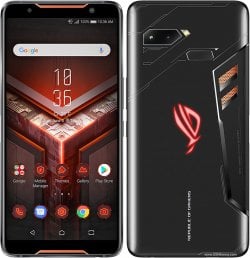 ASUS ROG Phone Z01QD (Hardware)
ASUS ROG Phone Z01QD (Hardware)
Official GBAtemp Review
Product Information:
- Official Store: https://rog.asus.com/phones/rog-phone-5s-model/
Mobile gaming is somewhat of a luxury, a hybrid middle ground that many don't straddle because they have a console, or they have a PC for gaming and a mobile phone for more traditional cellular device pursuits. Beyond calls, texts, and email, phone technology is steadily growing to give you stunning performance for applications, games, and entertainment in the palm of your hand and within the confines of carrying it in your very pockets.
ASUS Republic of Gamers (ROG) branding strives to deliver peak gaming-oriented hardware on the go, via their mobile phone innovations. With phones in the series ROG Phone 5 series now stretching into 5 individual models, I finally got my hands on the ASUS ROG Phone 5S ZS600KL smartphone and got to take it for a spin.
Tech Specs:
- Model: ASUS Z01QD ZS600KL 6" LTE Dual Sim
- Released: October 2018
- Dimensions: 158.8 mm x 76.2 mm x 8.3 mm (6.25 in x 3.00 in x 0.33 in), 200 g weight.
- RAM: 8GB
- Storage: 128GB (512GB model also available), not expandable
- Display: 6" FHD, AMOLED, 90Hz, HDR
- Resolution: 1080 x 2160 pixels, 18:9, 403 ppi
- CPU: 10nm Qualcomm SDM845 Snapdragon 845, Octa-core (4x2.96 GHz Kryo 385 Gold & 4x1.7 GHz Kryo 385 Silver)
- GPU: Adreno 630
- Cameras: 12 MP, f/1.8, 24mm (wide), 1/2.55", 1.4µm, dual pixel PDAF, 4-axis OIS
8 MP, 12mm (ultrawide), no AF - Sensors: Rear Fingerprint scanner, Gryo, Accelerometer, Proximity & Compass
- Sound: Stereo loud speakers, 3.5 mm headphone jack, Bluetooth 5.0 (A2DP, LE, aptX HD)
- Battery: Li-Ion 4000 mAh, 30w Fast Charging & Quick Charge 4+
- Cooling: Rear
- Connectivity: GPS, NFC, Bluetooth 5.0, Dual-band Wi-Fi 802.11 a/b/g/n/ac/ad
Presented in a hexagonal prism-shaped box, embossed with PCB-like detailing and metallic red accents, even the packaging screams luxury branding; a premium product, and a next-level experience to come. Given that this is the 2018 model 5S rather than the latest ASUS ROG Phone 5S Pro, this review will cover basics such as emulation and everyday usage rather than pushing for modern gaming excellence on this device.
Out of the box, the Z01QD is running Android 9.0 with ROG's Gaming X UI. Having not seen any Android updates since late 2018, but at least security updates from September 2020, there is no way of updating to 12 which is to be expected to be fair, but at the same time, why shouldn't it conceivably be updated to the latest Android OS? Ultimately, the answer comes down to security and licensing, with Google wanting users to update to newer devices to mitigate any looming hardware exploits, and most companies' flagship devices rarely committing to two or more updates for the lifetime of the phone. Without resorting to something like LineageOS to propel your device into 2022, you simply have no option to ensure your device is entirely safe and secure, and even then only the ASUS ROG Phone 3 (2020) model is supported by LineageOS currently.
Android 9.0 is, actually, perfectly serviceable on this device, offering incredible ease of use, and the majority of features you know and love from Android's UI, such as swiping up to bring up on-screen buttons, notification improvements, multi-camera support, and HDR support. In addition to the base OS, ASUS has integrated their Gaming UI, known affectionately as "X", which is easily activated by the handy air triggers; whereby you squeeze the screen edges until it activates.
Air triggers are cleverly secreted ultra-sonic pressure-sensitive areas of the screen edge that can detect your hand's crushing forces in order to facilitate more features. By default, this is set to detect a long squeeze and toggle X mode on and off, ready for gaming. X mode effectively suppresses background processes and notifications and enhances hardware efficiency to give you a streamlined focused mode for getting the most out of your device when hammering your favourite games.
The screen is around 77% body to screen ratio with just a small sliver of the screen cut off top and bottom, and no new-fandangled edge to edge or cutouts going on for cameras or other gaudy hardware features. Physically there is a power button and volume buttons on the right side, a dual power port on the left side, a USB-C power socket, and a 3.5mm headphone socket on the bottom, nothing too out of the ordinary, and no other hardware buttons to be found on the device barring the fingerprint sensor on the rear. The 6.0" HDR display has an optional 60-90Hz refresh rate, a resolution of 1080 x 2160 pixels giving it an 18:9 aspect ratio with 403 DPI which makes watching movies and streaming content blissfully gorgeous to behold. Paring this screen with the front-facing stereo speakers within makes watching content excellent on the go. I tested a few movies streamed via VLC and some episodic content from YouTube and the experience was excellent with crisp, high definition content and equally solid sound quality delivered to my visual and auditory senses with ease via 24-bit 192kHz capable audio.
The camera is a perfectly usable 12mp main snapper with 1920 x 1080 FHD video recording with stabilization, auto anti-flicker, and handy on-screen grid to get your proportions right. The secondary 8mp wide-angle lens sees you able to shoot landscapes and scenery which I found to be at an oddly grainy 5mp 18:9 quality that I wasn't a fan of, but it also houses a great quality selfie camera for taking up-close and personal shots. While it certainly takes a nice clear picture I noticed it washed out the colours a smidge in comparison to what I was seeing in true life, but overall it's a great little camera to have on you for capturing those day to day moments.
Let us not forget that it is possible to install a tweaked version of Gcam on this model too, which means you get the awesome feature-packed and slightly updated camera application from Google's Pixel series of phones, on your ROG too! This means you get features such as night vision, photosphere, and playground modes to augment your photography even further.
General use on this device is extremely smooth as a day to day mobile. As you would expect, a gaming phone makes for an exceptionally slick everyday device that you can rely on for messaging and social media, viewing web and media content, making and taking calls with ease. Even the security features of facial recognition, while at nowhere near the level of Apple's 3D face-scanning cameras, still provided a seamless experience in recognising and unlocking the device with my face in most scenarios I tried it in. Fingerprint security also worked flawlessly and very quickly as an alternative, and though it is positioned on the rear of the device I found it relatively easy to engage without thinking about where it was; it's designed to sit in an anthropomorphic sweet spot, which worked well for my hands.
I would argue that the OS is the main stumbling point for this device, though everything works well and is practical and uncomplicated to use, I still found the look and feel a bit tired and a little underwhelming in places, where it simply needs a little freshening up and a little modernising to really take it to the next level. Had I reviewed this device in 2018, alongside phones, or even iDevices of that age, I'm sure I wouldn't have the same grumbles here due to it obviously being fresh and new back then, but not now; technology and user interface ideals have changed a lot in the last three years. I like the X mode integration, especially the changing OS highlights and morphing wallpaper when you toggle it on and off (you get a transforming animation and the icons all glow red), but, it feels like a bit of an overdesign by today's standards, where we want easily readable design language and ubiquity regardless of modes, although, then again ASUS changing the look and feel of the phone really gets you geared up for gaming when you behold this thing converting into the game mode in your hands, and if you have the additional dock, and a mouse, keyboard and monitor; you could turn the ROG into a mini gaming PC!
It's the things ASUS has added that really take this phone to the next level and elevates it against its competitors, with features such as power master, which tells you if the battery is being drained, then suggesting handy tips such as turning down the time before the screen turns off, stopping unnecessary apps and disabling location-based services, Game Genie for live broadcasting, X mode for dedicated gaming, Aurora LED lighting synchronisation, Air Triggers, and fan control for the ROG aerodynamic air intake system on the rear; it all adds up to a clean, professionally-tailored gaming experience for hardcore gamers to really grab hold and take advantage of.
Utilizing Geekbench 5.4.4, I took a few measurements to compare my personal iPhone 12 Pro Max against this more dedicated gaming device. Starting with X mode on and with a single-core score of ~520 and a multi-core score of ~2230 the ROG phone's results sits slightly above that of the similarly 845 outfitted phones. Testing with X mode turned off you appear to witness better results, moving the single-core score to ~540 and the multi to around ~2400.
With 3 years of mobile evolution and the entire Android VS iOS thing between the devices it came as no surprise that the iPhone 12 Pro Max completely smokes the ROG in terms of raw performance on both single-core and multi-core. But the big question is why does X mode not yield higher results than without?
X mode shifts the device into a mode where the four smaller cores are disabled and the four higher cores' clock speeds are increased. This doesn't translate well in benchmarking apps unless you consider that just four cores are pulling that result as opposed to the entire eight. When launching applications, Game Engine kicks in and will smartly decide for itself whether to deploy all cores or dip into X mode for better compatibility. If you think you know better, you can always override this and try it out for yourself!
The performance of the ASUS ROG Phone is not going to blow anyone away by today's standards. SOCs have advanced and GPUs have definitely ramped up what is possible for mobile. Testing the latest nightly build available of the highly acclaimed GameCube and Wii emulator, Dolphin, I opted to test out a couple of games that we know should work fine, or should struggle. Testing Mario Kart: Double Dash with and without X mode you notice a few frame dips and audio stutters throughout the menus but reasonably great 59fps gameplay, however, with it turned on you are met with a more solid performance and very few if any noticeable stutters at all.
Testing the Wii side of Dolphin with Super Mario Galaxy 2, you get 30-47 fps in the start screens with definite audio stuttering in normal mode, and around 40-53 fps but still audio jitter and clearly it's suffering from slowdown in X mode. As a gamer who understands that Wii in your pocket is not widely attainable, nor physically playable, I find these results to be more than adequate, even by today's standards, because it's only the latest and greatest devices that will run games like SMG2 at even remotely playable speeds, with no audio slowdown. Even using Game Genie's in-game features to speed up the games and offload any further background processes made little to no difference. Overall, I would say that for emulation, anything GC and below is superb and definitely playable, however, anything more complicated than semi-demanding Wii games is entirely out of the question unless you can seriously tolerate slideshows and laggy audio--and don't even think about 3DS or PS2 emulators as they will simply choke on this hardware.
Given the sheer ease of use and the finely crafted, professionally tailored software you are gifted with when you buy one of these devices; you would be hard-pressed to find another such product that does it all for you the way ASUS does. I'm a big fan of the ROG phone's potential, and with today's 120Hz refresh rates, faster processors and GPU's, more optimized and feature-rich OS and UI layering, these phones could really make mobile gaming all that less indistinguishable from their PC counterparts.
The ROG experience is definitive, game-changing, and constantly evolving, so I would love to check out some of the more up to date devices in order to draw further comparisons with this device in future reviews.
Verdict
- Large crisp display
- Great sound quality
- Clever gaming features
- Dated OS
- Plastic back
- Rather weighty
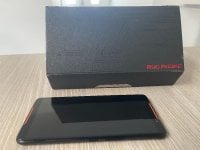
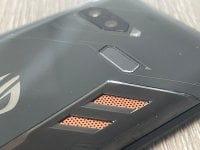
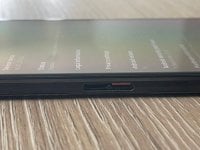



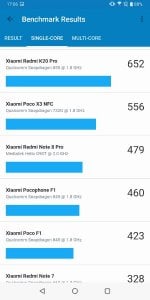
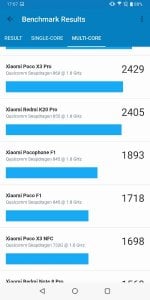
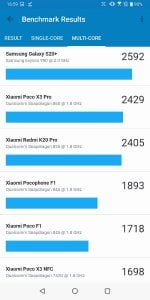

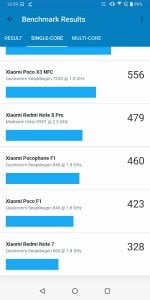


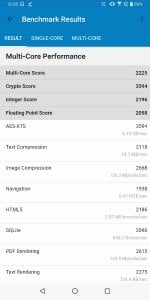
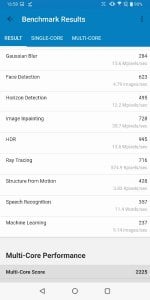

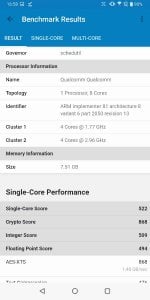
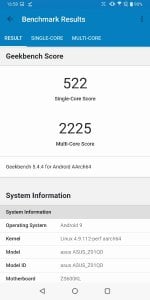
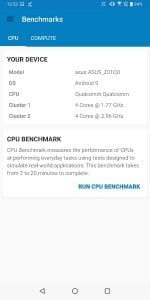
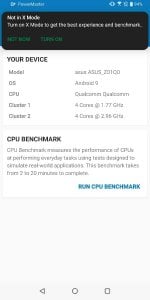




Reviews
MelGeek CYBER01 Magnetic Switch Rapid Trigger Gaming Keyboard
Today for review, we’ll be taking a look at the latest gaming keyboard from Meltek, the CYBER01 magnetic switch offering!
GEEKOM XT12 Pro Mini PC
Claimed to be the world's most cost-effecient i9 Mini PC, we check out the latest from Geekom.
Kospet Tank T3 Ultra
Tough enough to navigate and conquer the rugged wilderness.
Teenage Mutant Ninja Turtles Arcade: Wrath of the Mutants
The Turtles are back for their umpteenth game outing, but is this one worth it?
Alone in the Dark (2024)
Alone in the Dark is a Survival Horror game available for PlayStation 5, Xbox Series S/X and PC.
Site & Scene News
New Hot Discussed
Name the Switch successor: what should Nintendo call its new console?
Microsoft is closing down several gaming studios, including Tango Gameworks and Arkane Austin
Nintendo officially confirms Switch successor console, announces Nintendo Direct for next month
Japan-exclusive Genesis game "The Hybrid Front" is getting an English fan translation
DOOM has been ported to the retro game console in Persona 5 Royal
Review MelGeek CYBER01 Magnetic Switch Rapid Trigger Gaming Keyboard
Xbox release date for shooter 'Hypercharge: Unboxed' revealed
'Dragon Ball: Sparking! Zero' gets new trailer; revels new roster
PC and Xbox-exclusive 'Dungeons of Hinterberg' to launch in July
'Lost Records: Bloom & Rage' gets new trailer
Wii U and 3DS online services shutting down today, but Pretendo is here to save the day
Nintendo Switch firmware update 18.0.1 has been released
The first retro emulator hits Apple's App Store, but you should probably avoid it
Delta emulator now available on the App Store for iOS
TheFloW releases new PPPwn kernel exploit for PS4, works on firmware 11.00
Nintendo takes down Gmod content from Steam's Workshop
A prototype of the original "The Legend of Zelda" for NES has been found and preserved
Anbernic reveals specs details of pocket-sized RG28XX retro handheld
Nintendo Switch Online adds two more Nintendo 64 titles to its classic library
Nintendo "Indie World" stream announced for April 17th, 2024
Wii U and 3DS online services shutting down today, but Pretendo is here to save the day
Nintendo officially confirms Switch successor console, announces Nintendo Direct for next month
Nintendo takes down Gmod content from Steam's Workshop
The first retro emulator hits Apple's App Store, but you should probably avoid it
Delta emulator now available on the App Store for iOS
Nintendo Switch firmware update 18.0.1 has been released
TheFloW releases new PPPwn kernel exploit for PS4, works on firmware 11.00
Name the Switch successor: what should Nintendo call its new console?
DOOM has been ported to the retro game console in Persona 5 Royal
Nintendo Switch Online adds two more Nintendo 64 titles to its classic library